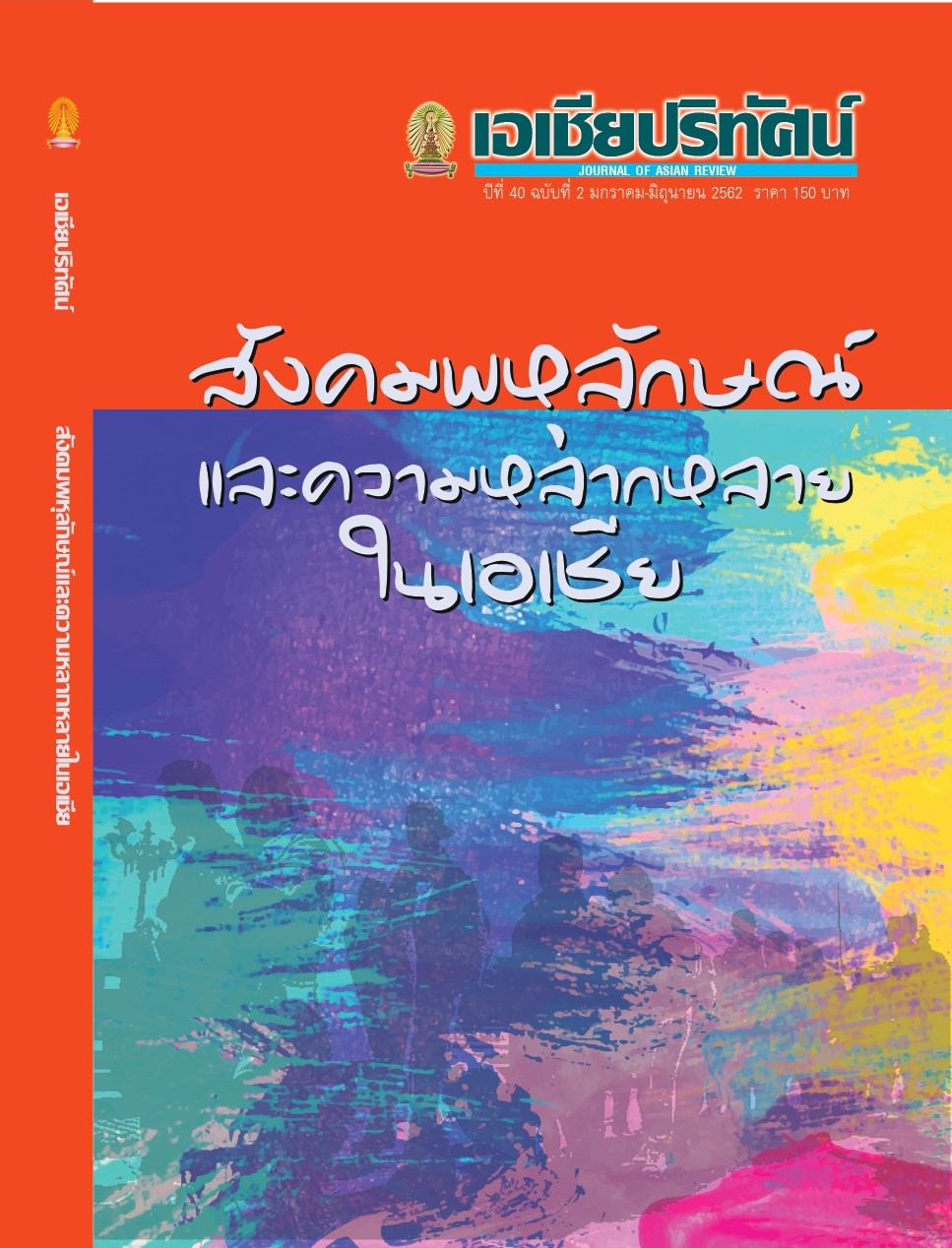Houses and Mosques in Water Villages (Kampong Ayer): Reflections of Melayu Culture of Muslim in Brunei Darussalam
Main Article Content
Abstract
The objective of this article was to explore houses and mosques that reflect Melayu culture of Muslims in Brunei Darussalam using qualitative research method. Data were collected from related documents and the field through observation and in-depth interviews with 20 informants who were academics, officials and residents of the village. Triangulation was performed with the data for reliability, and an analytical description was written. The study found that Melayu culture of Muslims in Brunei Darussalam reflected in their houses and mosques as follows. For houses, culture was reflected in the structures, the value of using wood for building houses, and the location in water. Utility space allocation showed that most houses had a similar layout with an exterior porch and a bench for relaxation and for guests to sit on. Regarding decoration of the house, balustrades are seen in various styles with some showing esthetic value. Some objects are painted with auspicious Islamic calligraphy. For mosques, most of them are with a traditional pyramid roof called Nusantara style that had locally been popular. Architectural art reflects Melayu culture of Muslims in Brunei Darussalam including individual happiness, keeping engagement with people in society, feminism, praising the religion, and religion as national security, respect for the monarchy, and sultan as a godlike figure without rituals. These aspects reflect strict Islamic principles. Some traditions are strict while others are relaxed, all of them change in line with the environment and the modern world and reflect their Muslim culture concretely and abstractly
Article Details
References
1. อคิน รพีพัฒน์. 2551. วัฒนธรรมคือความหมาย ทฤษฏีและวิธีการของคลิฟฟอร์ด เกียร์ช. กรุงเทพฯ: ศูนย์มานุษยวิทยาสิรินธร (องค์กรมหาชน).
2. นันทสาร สีสลับ. 2541. “ภูมิปัญญาไทย” ใน สารานุกรมไทยสำหรับเยาวชนโดยพระราชประสงค์ในพระบาทสมด็จพระเจ้าอยู่หัว เล่มที่ ๒๓. http://kanchanapisek.or.th/kp6/sub/book/
3. นิธิ เอียวศรีวงศ์, บรรณาธิการ. 2550. มลายูศึกษา: ความรู้พื้นฐานเกี่ยวกับประชาชนมุสลิมภาคใต้. กรุงเทพฯ: อมรินทร์
4. ปัญญา เทพสิงห์และคณะ. 2560. “ลักษณะบ้านในวัฒนธรรมมลายู: ศึกษากรณีกัมปงไอเยอร์ ประเทศบรูไนดารุสซาลาม.” วารสารวิทยบริการ 25(2): 25-35.
5. มุรีด ทิมะเสน. 2556. บ้านมุสลิม. กรุงเทพฯ: เรือนแก้วการพิมพ์.
6. ฉัตรทิพย์ นาภสุภา, บรรณาธิการ. 2556. ด้วยรัก เล่มที่ 8 : ศาสนาและความเชื่อกับสังคม. กรุงเทพฯ: เคล็ดไทย.
7. ศรยุทธ เอี่ยมเอื้อยุทธิ์. 2557. “ศาสนากับการเมืองอัตลักษณ์.” วารสารสังคมศาสตร์ 26(1): 93-108.
8. ศิริรัตน์ แอดสกุล. 2557. ความรู้เบื้องต้นทางสังคมวิทยา. กรุงเทพฯ: สำนักพิมพ์แห่งจุฬาลงกรณ์มหาวิทยาลัย.
9. อมรา พงศาพิชญ์. 2554. ความหลากหลายทางวัฒนธรรม : กระบวนทัศน์และบทบาทในประชาสังคม. กรุงเทพฯ: สำนักพิมพ์แห่งจุฬาลงกรณ์มหาวิทยาลัย.
10. อับดุรเราะหฺมาน อัลบัฆดาดียฺ. 2550. ศิลปะ ดนตรี การร้องเพลง และการเต้นรำ ในมุมมองอิสลาม. ปัตตานี: วิทยาลัยอิสลามศึกษา มหาวิทยาลัยสงขลานครินทร์.
ภาษาอังกฤษ
11. Department of Economic Planning and Development. 2011. Preliminary Report of Population and Housing Census. Benda Seri Begawan: Department of Economic Planning and Development.
12. De Vienne, Marie-Sybille. 2016. Brunei From the Age of Commerce to the 21th Century. Singapore: NUS Press.
13. Dolah, Sulaiman. Interviewed. (Sultan Sharif Ali Islamic University), 28 July 2016.
14. Fatimah, Dayang. Interviewed. (University of Brunei Darussalam), 28 September 2015.
15. Hasan, Abdul Ghaffar. 2004. The Rights & Duties of Women in Islam. London: Darussalam.
16. Haji Ahmad, Suriyati Binti. 2008. 50 Years Historical Moments of Omar Ali Saifuddien Mosque (1958-2008). Bandar Seri Begawan: The Ministry of Religion Affair.
17. Jones, Andrew. 1997. “Urban conservation issues in Brunei Darussalam: The Case of Brunei’s Water Villages.” Planning Perspectives 12: 457–475.
18. Laksanasamrith, Ekkarach. 2015. “Water Temple In Architecture: Tadao Ando.” Dsignsomething, August 25. Accessed October 12, 2016. https://dsignsomething.com/.
19. Pratiwi, Wiwik D. 2014. “Cultural Identity, Dwelling Transformation and Architectural Research.” Paper present at the Seminar and Workshop: Architecture: Religion, Culture and Identity, Pertubuhan Ukur Jurutera & Arkitek (puja) Brunei Darussalam, June 9– 10. http://puja-brunei.org/pdf.
20. Qaradavi, Yusuf al. 2004. The Lawful and Prohibited in Islam. Translated by Banjong Binkason. 5th edn. Bangkok: Islam Book.
21. Richard, Weixing Hu. 2009. “Building Asia Pacific Regional Architecture: The Challenge of Hybrid Regionalism.” The Brookings Institution, February 16. https://www.brookings.edu/wp-content.
22. Wong, Maggie Hiufu and Dan Tham. 2018. “Brunei's Kampong Ayer: World's largest settlement on stilts.” January 24. Accessed September 5, 2017. https://edition.cnn.com/travel/article /kampong-ayer.


